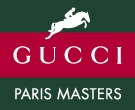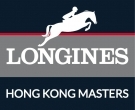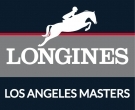What you need to know to follow a show jumping competition : the essential glossary.
To understand and enjoy show jumping, you need to be familiar with key terms and what they mean. Until you grasp basic horse lingo, listening to announcers providing commentary at a Grand Prix can be like listening to monkey gibberish. The following list fills you in on the basic terms you need to know to watch a show jumping competition as an expert.
Athlete: Show jumping is the only sport where two living beings compete together: a horse and a rider.
- Horse: The horse is the fruit of the long and patient work of the breeders who have carefully studied genetics before producing him. The young horse begins his sporting life at 3 with light schooling, having been “broken in” (ridden for the first time). He will take part in his first competitions at 4. When he turns 6, it is possible to spot if he has the talent to become a champion and he can begin his international career. From then on, stallions, geldings and mares compete in the same classes. A good horse starts to be successful at 8, and is at the peak of his career from 10 to 15, but can keep performing until the age of 20. Show jumping horses are mainly born in France, Germany, the Netherlands and Belgium.
- Rider: The rider is not just any fellow sitting on the horse. He/she is more than a pilot. Usually, a rider begins to ride at a very young age. The rider is the brain of this “athlete combination”. First of all the rider has skill and talent: an eye, and a sense of balance not to disturb the horse. He/she is the one who “moulds” the horse, requiring years of work, education, dressage, and patience. On the course, the eye of the rider and his ability to make quick decisions are as important as the skill of the horse, his physical aptitude, his carefulness, etc.
Arena: It’s the theatre stage. At the Masters Grand Slam series, it’s a 70 X 30 meters ring whose footing is made of a sophisticated mixture of fibre and sand developed to protect the legs and the joints of horses. This ring is surrounded by the stands (with a capacity up to 5,000 spectators), the TV cameras and, in the arena, the obstacles are surrounded by decorations (flowers etc.) which may distract the horses.
Combination: (See obstacles and stride first). A combination is a series of two or three fences separated by one or two cantering strides. If the horse refuses one fence of the combination or runs out between two elements, the pair has to jump all two or three fences again. A combination is considered as one obstacle (with 2 or 3 difficulties).
Course-designer: At the Longines Hong-Kong Masters as well as in the Los Angeles and Paris legs of the Masters Grand Slam Indoor, course designer is Luc Musette, from Belgium. Half-artist, half-architect, he creates the course by designing the route, placing the obstacles in order to ask “questions”: jumps spaced at such distances that horses will have to show their obedience and availability and the riders their skill, combinations of two or three obstacles, tight turns. The designer must consider the level of the competitors and of the class, the table and its relevant rules. His goal is to adjust the level of difficulty to favour the best riders, while allowing all competitors to complete the course safely.
Elimination: After a second stop (refusal) or a fall of the horse and/or the rider, the pair is eliminated.
Five-Star: International show jumping competitions are ranked from one to five stars by the FEI according to their level, "five stars" being the highest category. All three stages of the Masters Grand Slam Indoor are five-star shows (CSI 5*)
Jump-off: It’s the “tie-break”: the jump-off takes place at the end of some Table A classes to decide between the competitors placed equally after the main round. The jump-off course is shorter and different to that of the first round and is against the clock.
Mixed: show jumping is one of the very few sports in which male and female competitors (both horses and riders) compete in the same classes.
Obstacles (fences or jumps): There are two major types of obstacles: wide (spread-jumps) and vertical. The latter is a fence comprising at least two poles arranged vertically. On the other hand, a spread is wide as well as high. It may be wider than it is high and be lower at the front (rising) or the same height (parallel). A spread with two elements is called an oxer. A rising spread with three or more elements is called a triple-bar. In a Grand Prix, the obstacles can reach a height of 1m60 and a width of 2 meters or even more for the base of a triple-bar. A normal course comprises between 11 and 14 obstacles and up to 18 difficulties to jump when you consider the combinations. A combination of jumps is considered as one obstacle.
Prize money: The performances in a show jumping competition are rewarded by money. The first 30% of the placed riders receive prize money and the winner alone receives 30% of the total prize money of a class. That of the Masters Grand Slam Indoor and of the Longines Hong-Kong Masters, is some of the highest in the world. One million euros (1.2 million of dollars) is up for grabs for a triple-win in the Masters Grand Slam Indoor and the Longines Grand Prix of Hong-Kong boasts a record amount of $US 700,000.
Stride: One of the main difficulties of show jumping lies in the way the riders will manage the strides of their horses between the fences. One cantering stride of a horse covers approximately 3.50 meters. The rider can shorten or lengthen the strides in order to adjust their number between two fences so that the horse can jump the obstacle in good conditions, taking off neither too close nor too far.
Table: Different scoring systems are used to place the competitors at the end of the class. The most common is the “Table A” where jumping faults or the first refusal generate 4 penalty points. Time faults may be added to the final result : 1 point for every 4 seconds over the allowed time. In “Table C” classes, jumping faults are converted into seconds added to the time taken to complete the course. Usually a jumping fault generates 4 extra seconds, but for the Longines Speed Challenge, this has been reduced to 2 seconds, which gives the riders the opportunity to make up for a fault if they are fast enough!
Walking the course: Once the course has been built by the course-designer and his team, the riders are allowed to “walk the course” with their coaches in order to memorise the design, the route , to calculate the number of strides between the obstacles positioned close together and to locate the short-cut and other way to save time in case of a speed-class or in view of a prospective jump-off.
Warm-up arena or Paddock: It’s the arena outside the main arena where the riders and grooms can warm-up the horses before jumping the course and also cool them down afterwards. At least two obstacles, one vertical and one oxer, are available in this arena. Their height must not exceed the height of the obstacles in the competition arena. At the Masters Grand Slam Series, the Paddock is located in the middle of the Prestige Village, to let the public enjoy all the sports "facettes".


